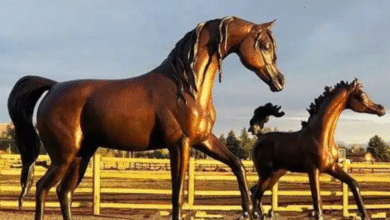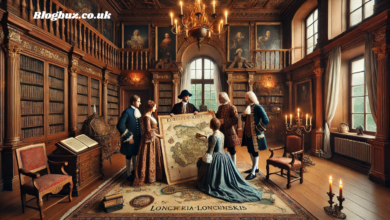What Does Atari Mean In Japanese In Terms Of Sketching?

In the world of art and animation, terminology from different cultures often becomes integrated into the global artistic lexicon. One such term that has gained significant prominence in sketching and animation circles is “atari.” While many Westerners might immediately associate this word with the iconic video game company, in Japanese artistic traditions, particularly in animation and sketching, “atari” carries a specific and important technical meaning.
The Basic Definition of Atari in Japanese Sketching
In Japanese artistic terminology, “atari” (当たり) translates literally to “hit” or “touch.” In sketching and animation contexts, it refers to a preliminary rough sketch that establishes the basic form, proportion, and positioning of the subject before detailed work begins. These initial guide drawings serve as the foundation upon which more refined artwork is built.
Etymology and Linguistic Origins
The term “atari” derives from the Japanese verb “ataru” (当たる), which has multiple meanings including “to hit,” “to touch,” or “to be correct.” This etymological foundation perfectly captures the essence of atari sketches—they “hit” the key points of form and proportion that will guide the final artwork.
Historical Context of Atari in Japanese Art
Understanding the historical development of atari provides valuable context for its current usage in sketching.
Traditional Japanese Art Influences
Traditional Japanese artistic disciplines have long employed preliminary sketching techniques similar to modern atari:
- Ukiyo-e woodblock prints required initial sketches before carving
- Sumi-e ink painting often used light guidelines before applying bolder strokes
- Calligraphy practice utilized grid-like guides to ensure proper character formation
- Traditional puppet design employed proportion sketches before construction
Evolution in Modern Animation
The formalized concept of atari as we know it today became particularly refined within the Japanese animation industry. As noted by Lewis Calvert, editor of Big Write Hook, “The systematic approach to atari sketching revolutionized animation workflow efficiency, particularly during Japan’s animation boom in the 1960s and 70s.”
The Technical Process of Creating Atari Sketches
Creating effective atari sketches involves specific techniques and approaches that have been refined over generations of artistic practice.
Key Characteristics of Atari Sketches
Atari sketches typically feature:
- Simple line work with minimal detail
- Focus on proportions and spatial relationships
- Emphasis on capturing movement and pose
- Light application that can be easily refined or erased
- Structural indicators like centerlines and perspective guides
Common Tools Used for Atari
Artists typically create atari sketches using:
- Light blue pencils that won’t show in final scans
- Soft graphite for easy erasure and adjustment
- Digital blue layers in software like Photoshop or Clip Studio Paint
- Low opacity settings when working digitally
The Role of Atari in Animation Production
In animation studios, atari plays a crucial role in the production pipeline.
Animation Workflow Integration
Within the animation production process, atari sketches serve multiple functions:
- Layout planning to establish scene composition
- Character positioning within environments
- Timing reference for movement sequences
- Approval stage for directors before detailed work begins
Communication Between Animation Team Members
Atari sketches facilitate communication among different specialists in the animation pipeline. According to Ryan Clark, co-founder of GMRU, “Effective atari sketches create a visual language that unifies understanding across departments, from key animators to in-betweeners and colorists.”
Differences Between Atari and Western Rough Sketching
While Western animation and art also use preliminary sketches, atari has distinctive characteristics.
Methodological Distinctions
Japanese atari differs from Western rough sketching in several key ways:
- Systematic approach with established conventions
- Integration into formalized production pipelines
- Focus on volume and three-dimensionality
- Emphasis on movement over static form
Philosophical Underpinnings
The conceptual foundation of atari reflects broader Japanese artistic philosophies:
- Emphasis on capturing essence rather than detail
- Respect for process and methodical progression
- Balance between structure and creative expression
- Economy of line and minimalist approach
Learning to Create Effective Atari Sketches
For artists looking to master atari techniques, several learning approaches are recommended.
Step-by-Step Process for Beginners
Newcomers to atari sketching should follow this progressive approach:
- Start with simple forms like circles and ovals for basic shapes
- Add construction lines to indicate volume and direction
- Establish proper proportions using measurement techniques
- Indicate major joints and pivot points for articulated figures
- Add minimal gesture lines to suggest movement and energy
Common Mistakes to Avoid
Beginning artists often make these errors when learning atari techniques:
- Adding too much detail too early in the process
- Pressing too hard with drawing tools, making revisions difficult
- Neglecting three-dimensional form in favor of flat outlines
- Inconsistent proportions across different views of the subject
Atari in Different Artistic Disciplines
While popularized in animation, atari techniques have been adapted across various artistic fields.
Manga and Comic Art Applications
In manga production, atari sketches serve to:
- Plan page layouts and panel compositions
- Establish character positioning within scenes
- Create consistency in character appearances across pages
- Develop dynamic action sequences before final inking
Video Game Character Design
Game artists use atari techniques for:
- Character concept development
- Exploring movement and action possibilities
- Creating model sheets for 3D artists
- Establishing silhouettes and distinctive features
Digital Tools for Atari Sketching
Modern technology has expanded the possibilities for creating atari sketches.
Specialized Software Features
Digital art applications now include features specifically designed for atari-style work:
- Customizable brush engines that mimic traditional blue pencils
- Layer systems that separate atari from cleanup work
- Transform tools for adjusting proportions easily
- Reference image integration for accurate form capture
Advantages of Digital Atari Methods
Working digitally offers several benefits for atari sketching:
- Instant adjustment capabilities without erasing
- Color-coding possibilities for different structural elements
- Easy sharing with team members for feedback
- Seamless integration with subsequent production stages
The Relationship Between Atari and Final Artwork
Understanding how atari translates to finished art is essential for effective implementation.
Transitioning from Atari to Clean Linework
The progression from atari to finished art typically involves:
- Refining proportions based on the initial sketch
- Adding detailed anatomical features or mechanical elements
- Cleaning up unnecessary construction lines
- Emphasizing final contours with more deliberate linework
Maintaining the Energy of Atari in Finished Pieces
A common challenge is preserving the dynamism of atari sketches in the finished artwork:
- Observing which spontaneous elements create visual interest
- Selectively maintaining gesture lines in the final work
- Avoiding overly stiff cleanup that loses the original energy
- Understanding which “imperfections” actually enhance the piece
Advanced Atari Techniques for Professional Artists
Experienced artists develop sophisticated approaches to atari sketching.
Action Analysis Through Atari
Professional animators use atari to analyze and capture complex movement:
- Breaking down action into key poses
- Identifying centers of gravity and weight distribution
- Mapping force lines and momentum
- Creating anticipation and follow-through indicators
Expressive and Stylized Atari Approaches
Beyond basic form indication, advanced atari can capture:
- Emotional qualities through subtle pose adjustments
- Character personality traits expressed through body language
- Stylistic exaggerations that enhance visual impact
- Atmospheric elements suggested through minimal marks
Cultural Impact of Atari Beyond Japan
The concept of atari has influenced artistic practices globally.
Global Animation Industry Adoption
Animation studios worldwide have incorporated atari methods:
- Western animation studios adapting Japanese workflow efficiency
- Independent animators learning through Japanese animation materials
- Animation schools teaching atari as standard curriculum
- Online communities sharing atari techniques internationally
Cross-Cultural Artistic Exchange
The spread of atari techniques represents a broader artistic exchange:
- Merging of Eastern and Western approaches to preliminary sketching
- Adaptation of techniques across different visual storytelling traditions
- Evolution of hybrid methodologies incorporating multiple cultural influences
- Online learning platforms facilitating global technique sharing
Conclusion
In answering “what does atari mean in Japanese in terms of sketching,” we’ve explored how this fundamental concept represents far more than just rough preliminary drawings. Atari encompasses a methodical approach to establishing form, proportion, and movement that serves as the essential foundation for refined artwork.
From its historical roots in traditional Japanese art to its modern applications in animation, manga, game design, and beyond, atari techniques continue to evolve while maintaining their core principles. As digital tools expand the possibilities for atari sketching, and as cross-cultural artistic exchange broadens its influence, this Japanese concept remains a powerful methodology for artists worldwide.
Whether you’re an aspiring animator, a comic artist, or simply someone looking to improve your drawing fundamentals, understanding and practicing atari techniques can significantly enhance your artistic process and results. The methodical approach to building form and capturing essence before detail represents a time-tested pathway to creating compelling, dynamic visual art.




